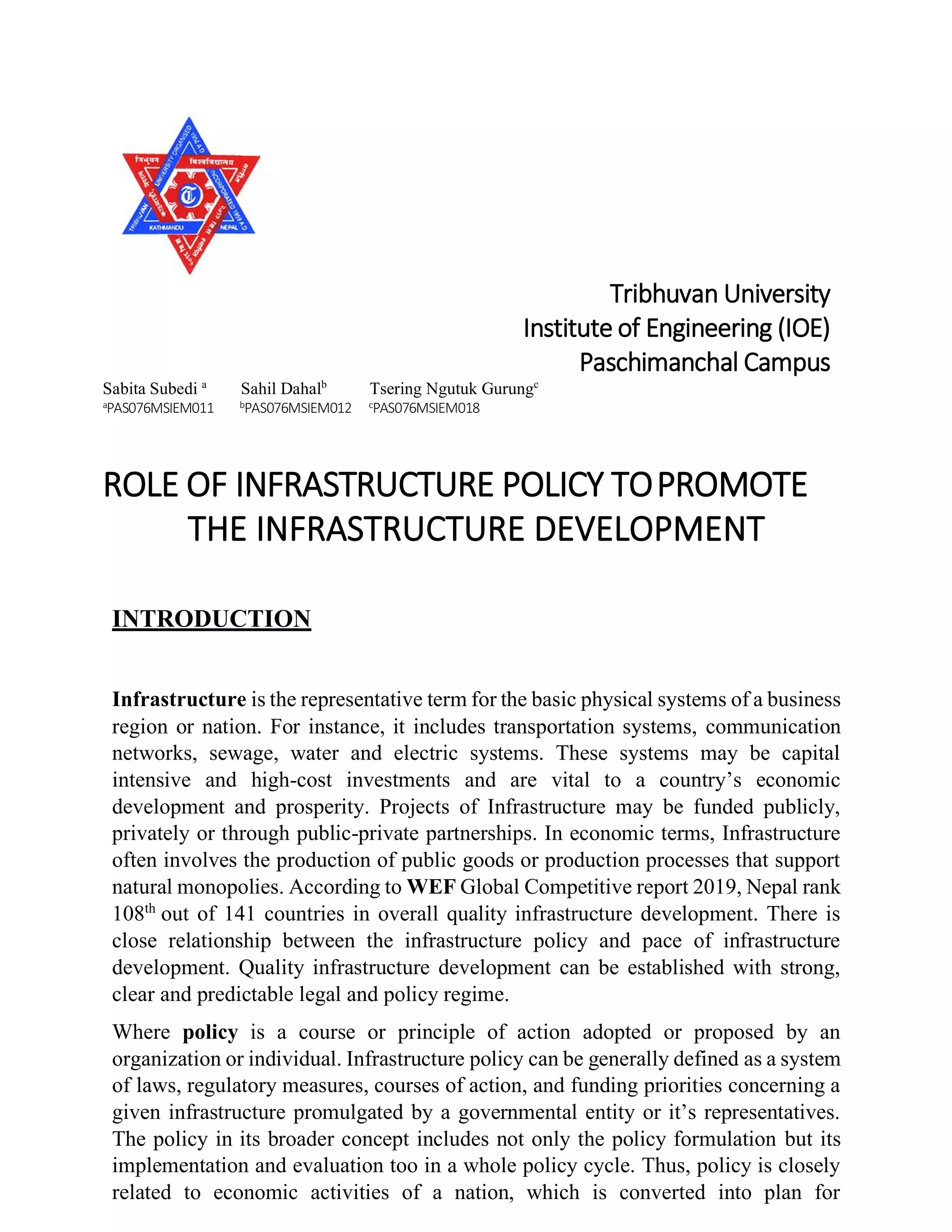This document discusses infrastructure policy and development in Nepal. It begins by defining infrastructure and its importance for economic development. It then discusses Nepal's ranking in quality infrastructure development. The document outlines several key aspects of infrastructure policy, including market structure options, price regulation, financing, and ensuring access. It provides details on Nepal's policies and strategies for various infrastructure sectors like energy, transport, water and sanitation. It also discusses issues with implementing infrastructure policies in Nepal, such as inconsistent laws and lack of a clear and predictable legal framework. Overall, the document provides a comprehensive overview of infrastructure policy and development challenges in Nepal.
















